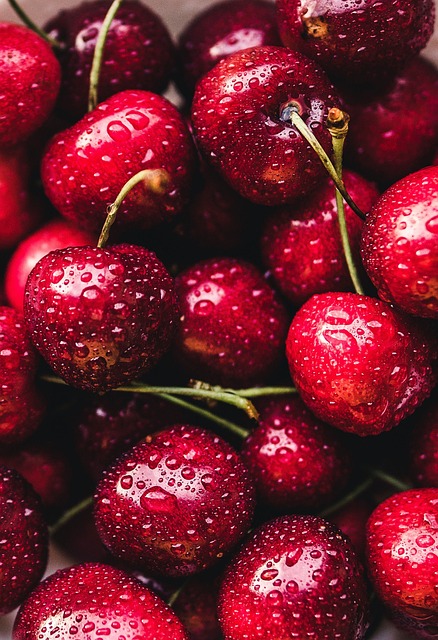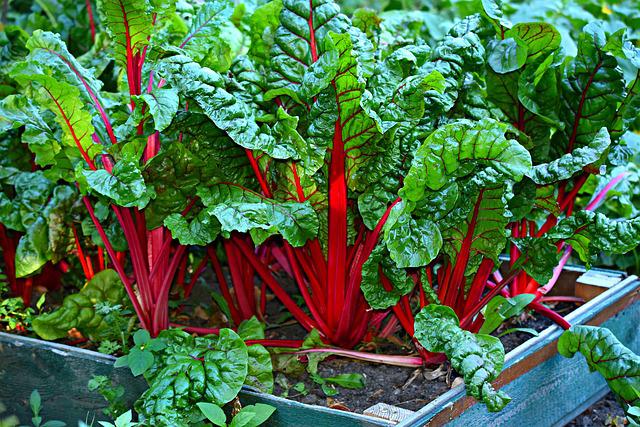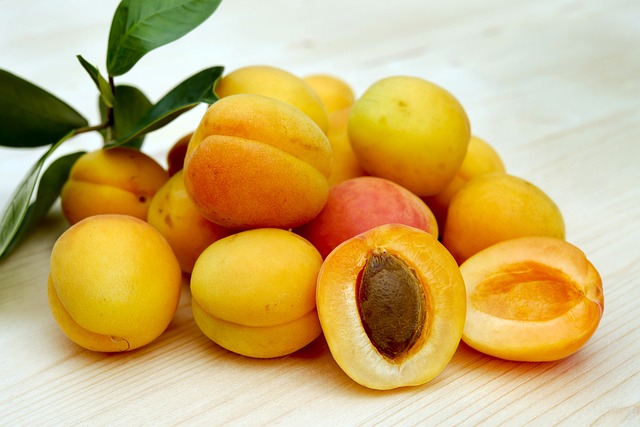Consuming fiber-rich fruits is a nutrient-dense and pleasant method to achieve daily fiber requirements. Dietary fiber is a complex carbohydrate found primarily in plant-based meals.
There are two types of fibers: insoluble and soluble. Each one acts differently in the body; therefore, eating a variety of high-fiber meals is essential. Most plant foods have a combination of the two.
Avocados, pears, and guavas, among other fruits, contain soluble fiber. Beans, legumes, as well as certain grains and vegetables are high in them. Soluble fiber draws water into your intestines, forming a gel. This slows digestion and keeps you satisfied for longer.
Insoluble fiber is commonly found in the seeds and skins of many fruits and vegetables, including berries and bananas. It is also found in whole grains, wheat bran, and vegetables. Insoluble fiber promotes intestinal health and keeps you regular. In other words, it can help to avoid and alleviate constipation.
Fiber has numerous health benefits, and continuous study demonstrates that there is still much we don’t know.
Some of the health benefits of fiber that we are aware of today include the following:
- Helps with weight loss and management.
- Encourages regularity
- Improves blood pressure
- Lowers LDL (bad) cholesterol levels.
- Lowers blood sugar level
- Lowers the risk of colon and breast cancer
- promote gut health
- Promotes intestinal health
- Potential to lower overall inflammation
Intake Recommendation
The recommended amount of fiber women should consume is 28 grams of fiber per day, and men should consume 34 grams per day, according to nutritionists. But just 10% of women and 3% of men do. Including fruits and other high-fiber foods in your diet can help you raise your daily fiber intake.
Passion Fruit
Passion fruit is a South American fruit that is not commonly found in grocery stores. It is sometimes seen among other tropical fruits such as papayas and guavas.
Passion fruit has a thick skin in yellow or purple yellow, fleshy, edible seeds, and a sweet yet tangy flavor. This tropical fruit is high in vitamin C but low in calories and fat, providing 24 grams in just one cup.
Guava
Guavas are a good source of folate, potassium, and vitamins A and C. It is also one of the fiber-rich fruits with the most fiber (9 grams per cup). Guavas can be cut, peeled, and eaten like apples, and the seeds inside are edible as well.
Guavas come in a range of colors. The skin of the fruit might be red, yellow, or purple, and the flesh can be yellow, pink, or red.
Raspberries
With eight grams of fiber in just one cup, raspberries have become the poster child for high-fiber fruits. Their vibrant crimson hue is due in part to antioxidants known as anthocyanins.
Other phytonutrients found in this berry include flavanols, procyanidins, and ellagitannins, which may help reduce the risk of some malignancies, heart disease, hypertension, and osteoporosis.
It is not necessary to wait until summer to enjoy fresh raspberries. They are frozen at their prime, preserving all of their beneficial nutrients and making them available all year. Almost any fruit is available frozen. This reduces spoiling and may be less expensive than purchasing fresh.
Blackberries
When it comes to fiber content, this berry competes with raspberries. Blackberries, like raspberries, have the greatest fiber content of any fruit. They contain eight grams per cup. Blackberries (fresh or frozen) are high in vitamin C and also contain vitamin K.
Blackberries, like other berries, should be stored in the refrigerator and washed only before eating. Put them in a smoothie or eat them on their own.
Pear
Pears, like apples, come in a wide range of flavors, textures, and hues. Nonetheless, regardless of species, all pears are high in fiber, with roughly 6 grams in a medium piece of fruit.

They’re versatile fruit that goes well with a variety of flavors. Toss chopped pieces on top of a salad, add to a cheese board, bake into muffins, or sprinkle over porridge. Pears with a splash of cinnamon can also be baked.
Avocado
Avocados are a special fruit since they contain a lot of beneficial mono and polyunsaturated fats. Are additional dietary advantages worth mentioning? Half an avocado contains roughly 5 grams of fiber, and the fruit is high in pantothenic acid, folate, vitamin K, and copper.
Avocados receive their vibrant green color from two antioxidants called zeaxanthin and lutein, both of which are beneficial to eye health.
Kiwi
Kiwis, which are fuzzy brown on the outside and (usually) brilliant green on the inside, are both sweet and sour. In addition, one cup of sliced fruit has 5 grams of fiber.
In addition, kiwifruits (with or without the peel) are high in potassium and vitamins C and E, three minerals that are often lacking in American diets.
Unripe kiwi fruit can be stored in the refrigerator for up to six weeks.
Blueberries
Blueberries have 4 grams of fiber per cup. Because blueberries have a lot of seeds, they are high in fiber. They have less fiber than raspberries and blackberries, but they are still a good source of fiber.
Blueberries have that beautiful shade of blue which contains an antioxidant called anthocyanin. Anthocyanin is proven to help prevent cardiovascular disease and cancer while improving brain function.
Oranges
Oranges are well-known for their immune-boosting vitamin C, but they are also high in fiber. This satisfying nutrient is found in 3 grams per medium fruit.
Oranges make an excellent portable snack. Their thicker skin protects them from road bumps and bruises.
Grapefruit
Grapefruit, another member of the citrus family, contains roughly 3 grams of fiber per one-cup serving and is high in vitamin C. Grapefruits are less sweet than oranges. The deep red Texas Red grapefruit is one of the sweetest grapefruits available.
By the way, grapefruit got its name because they grow in clusters similar to grapes.
Pomegranate
This unusual fruit can be stored in the refrigerator for months, so stock up when it’s in season. The juicy arils hidden inside the tough external skin provide approximately 4 grams of fiber every half-cup.
To open the fruit and retain as many arils as possible intact, remove the crown and slice the core of the fruit in four to six sections along the white membrane. Carefully crack open the pomegranate in a dish of water. Remove the arils from the skin gently. Fruity arils will sink to the bottom and separate from the rest of the fruit.
Mandarins
Citrus mandarins are high in fiber, with roughly 3 grams per cup. The key to buying mandarins (and another citrus) is to select fruit that feels hefty for its size.
Like most citrus fruits, mandarins are high in vitamin C and also high in vitamin A. Mandarins come in several varieties, including tangerines, satsumas, clementines, and pixies.
Strawberries
Strawberries, like their berry siblings (raspberries, blackberries, blueberries, and so on), are high in vitamin C, potassium, and fiber, three elements that most of us don’t receive enough of on a daily basis. Each cup of strawberries contains 3 grams of fiber (sliced).
Strawberries are available fresh all year, but frozen berries are just as nutritious.
Banana
Bananas, well-known for their potassium content, are also high in fiber, with 3 grams per medium fruit. They’re the ideal snack for athletes since they’re high in carbohydrates, easy on the stomach, and contain potassium, which may help prevent muscle cramps.
Frozen banana pieces can be added to a smoothie, sliced and served with peanut butter, or eaten straight off the peel.
Apricot
Fresh apricots have 3 grams of fiber per cup when sliced (and about 80 calories). Apricots are also high in vitamins A and C, as well as potassium.
Dried apricots are available all year and are healthy and fiber-rich, albeit they contain more calories than fresh fruit. They may also contain added sugar or other substances for preservation.
Cherries
Fresh cherries are normally available in the summer (June through August), although they are accessible all year in the freezer area. The Cherries have 3 grams of fiber per cup and are high in vitamin C.

Eating cherries may help improve sleep, reduce oxidative stress, lower blood pressure, and minimize overall muscular soreness following exercise, according to research.
Mango
Mangoes are native to Asia, but they’re a worldwide favorite—in fact, they’re one of the most popular fruits. They are naturally sweet and anti-inflammatory, which may lessen the risk of some diseases.
One cup of mango contains only 100 calories but contains nearly 3 grams of fiber and 100% of your daily vitamin C requirements.
Other Fruits with Fiber
While other fruits do not have the same fiber level as the ones listed above, they still supply some fiber as well as a variety of other beneficial elements.
- 1 cup slices papaya = 2.5 g
- 1 cup sliced jackfruit = 2.5 g
- 1 cup nectarine = 2.4 g
- 1 cup pineapple chunks = 2.3 g
- 1 cup plums = 2.3 grams
- 2 ounces raisins = 2 grams
- 1 cup of peaches Equal 2 grams
- 1 cup grapes Equal 1.5 grams
- 1 cup cantaloupe chunks = 1.5 grams
- 1 cup chopped watermelon = 0.5 gram
Questions and Answers
What are some fiber-rich fruits that are low in sugar ?
Grapefruit, strawberries, blackberries, avocados, and oranges are all high in fiber while low in sugar.
What are some fruits and vegetables high in insoluble fiber?


The majority of plant-based diets contain a combination of insoluble and soluble fiber. Many fruits have insoluble fiber in their seeds and skins. Insoluble fiber is abundant in bananas, berries, cauliflower, green peas, and dark leafy greens.
Which fiber-rich fruits and vegetables have a high soluble fiber content?
Soluble fiber is found in most fiber-rich fruits, including guavas, apples, nectarines, pears, avocados, and apricots. Soluble fiber-rich vegetables include Brussels sprouts, sweet potatoes, broccoli, carrots, and turnips.
What are fiber-rich fruits but low in acidity?
Although most fruits are considered acidic, some are lower in acidity than others. In general, the higher the pH number, the less acidic the solution. Pears, Bananas, avocados, mangoes, and berries (in moderation) are all high-fiber foods.
To Conclude
It should be noted that consuming a fiber-rich fruits may interfere with the absorption and efficiency of certain drugs. Consult your doctor about which medications to avoid and when to use them.
Fiber also binds to nutrients and transports them out of the body. Go for the recommended 20-35 grams of fiber each day to avoid this. Drink at least eight glasses of fluid each day if you follow a high-fiber diet.

